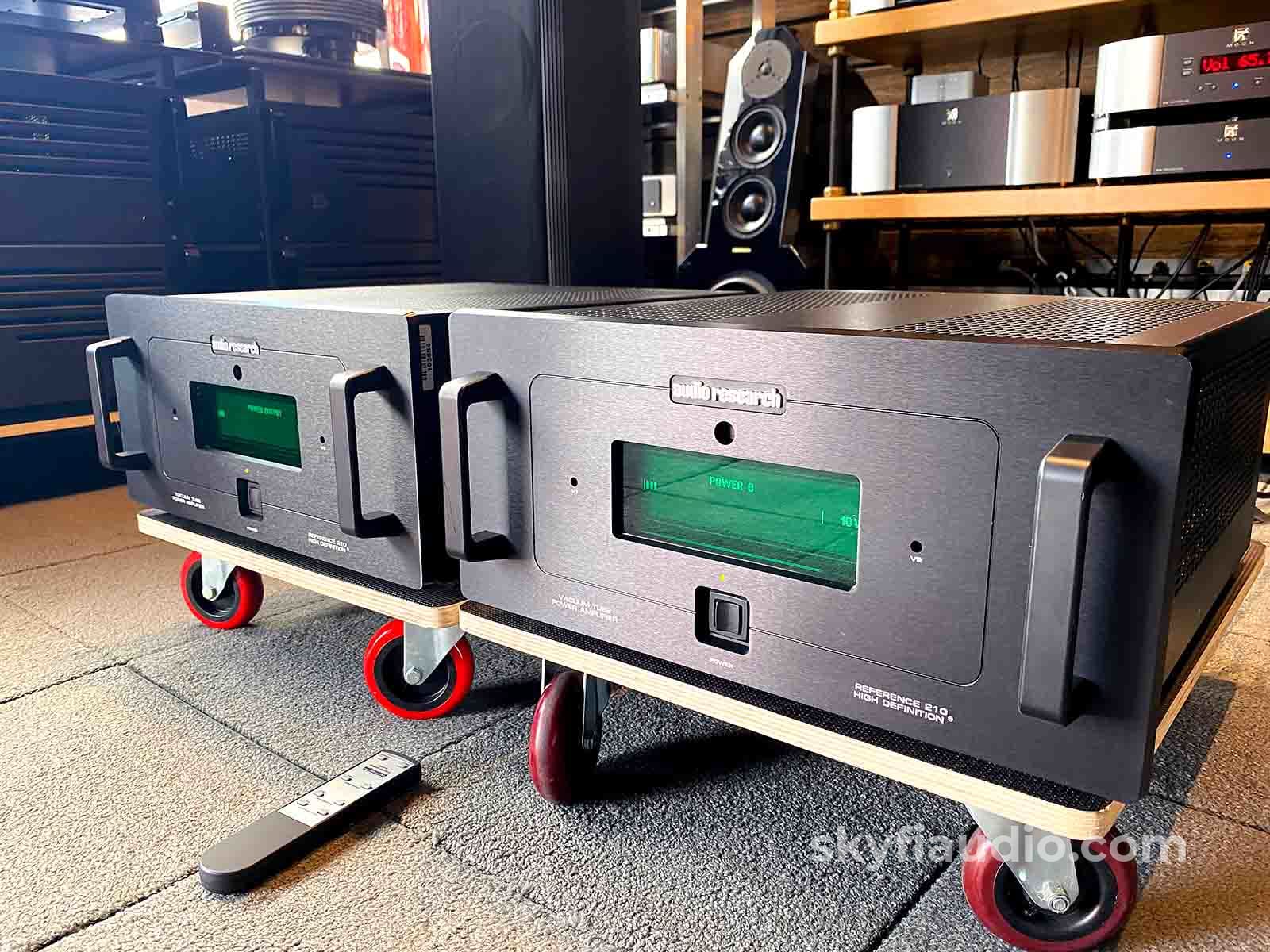
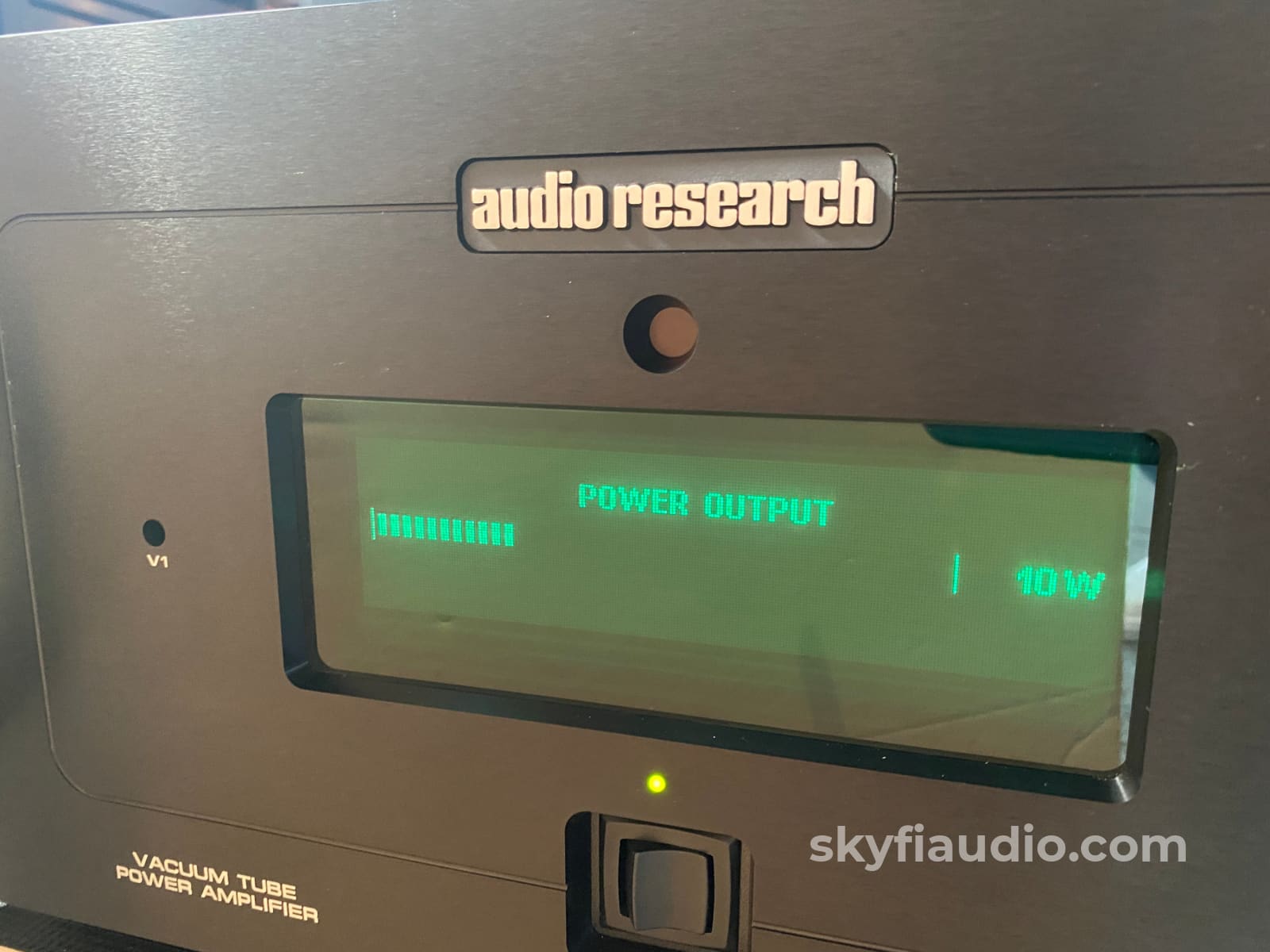
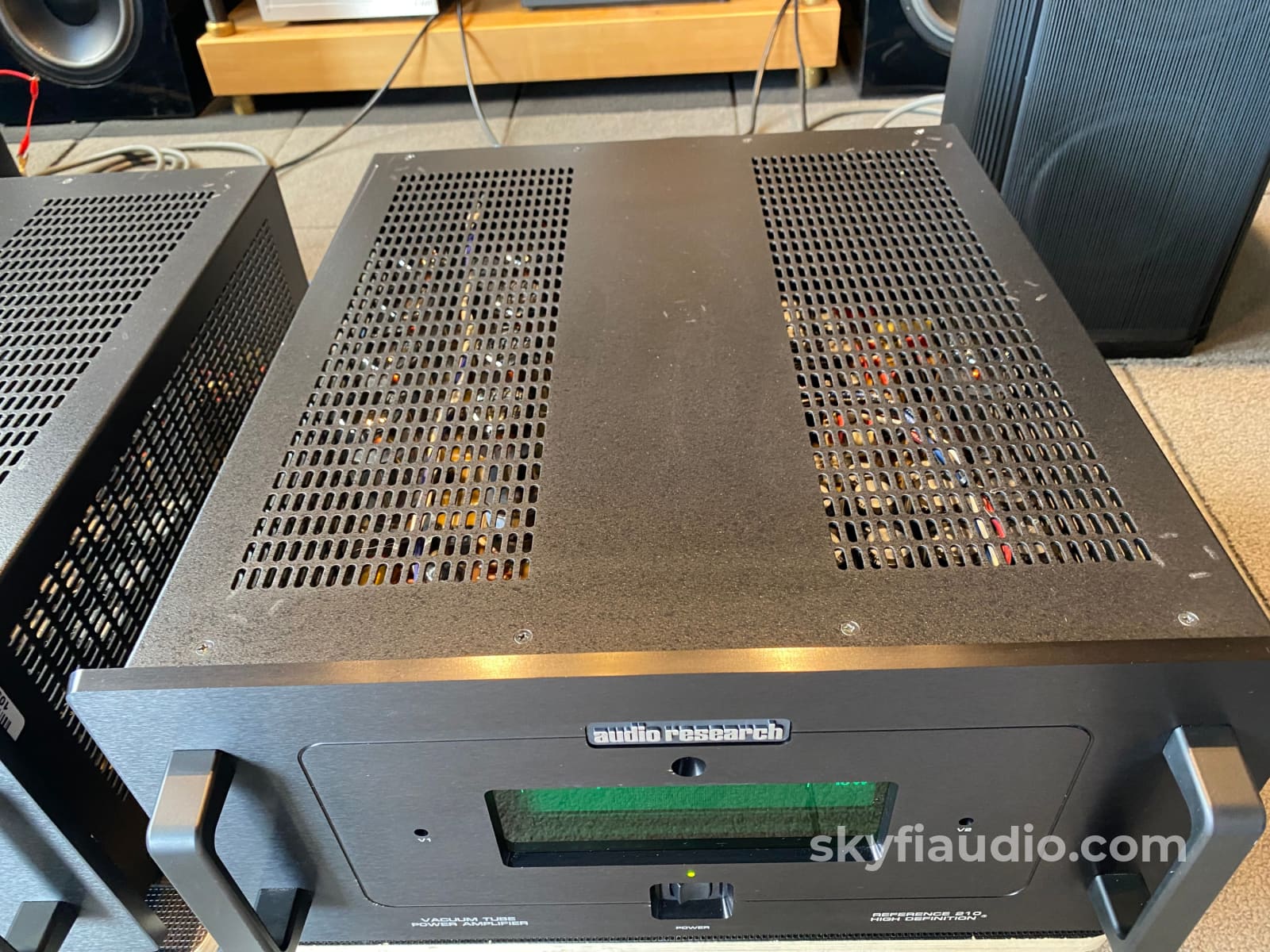
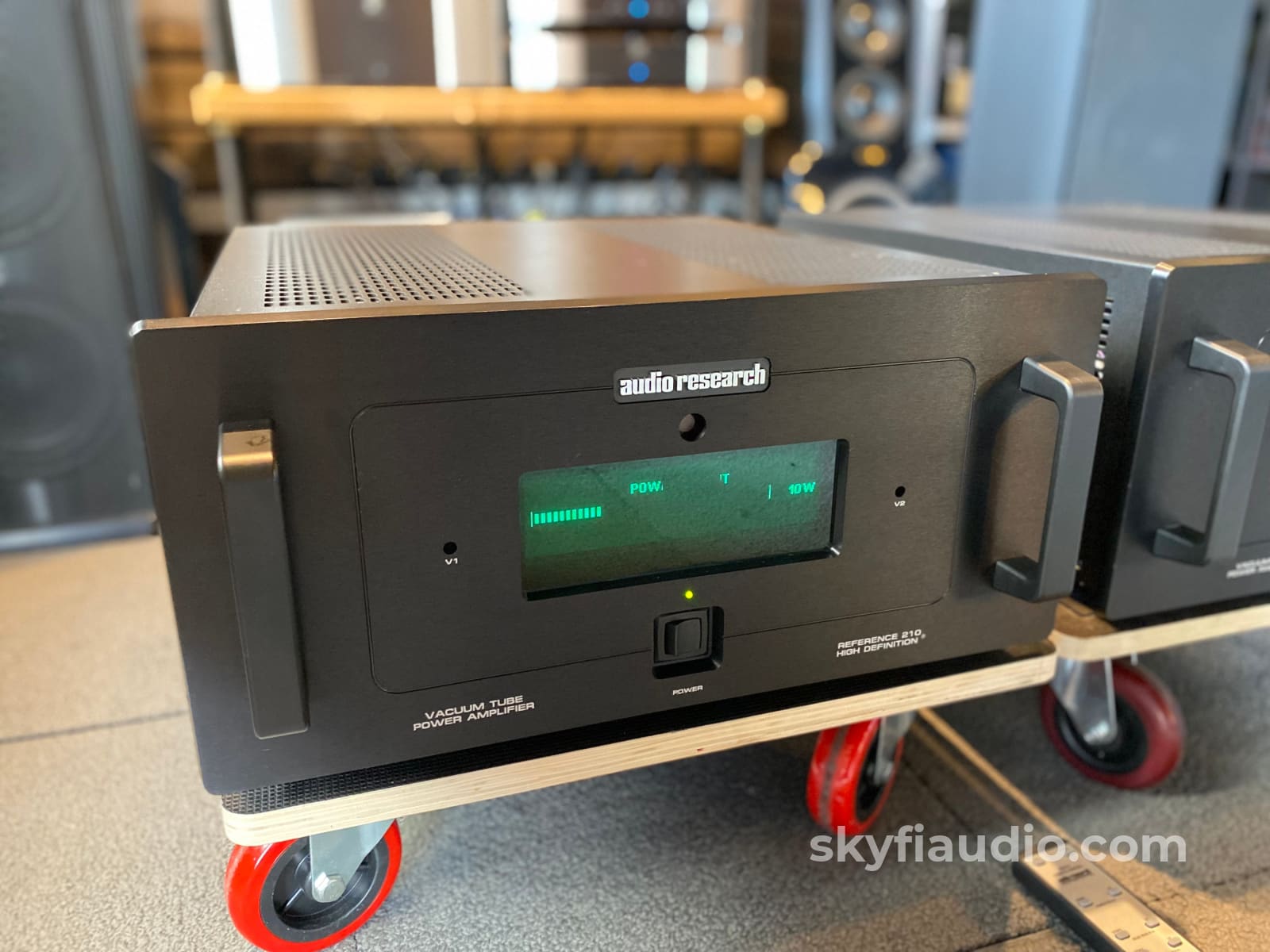
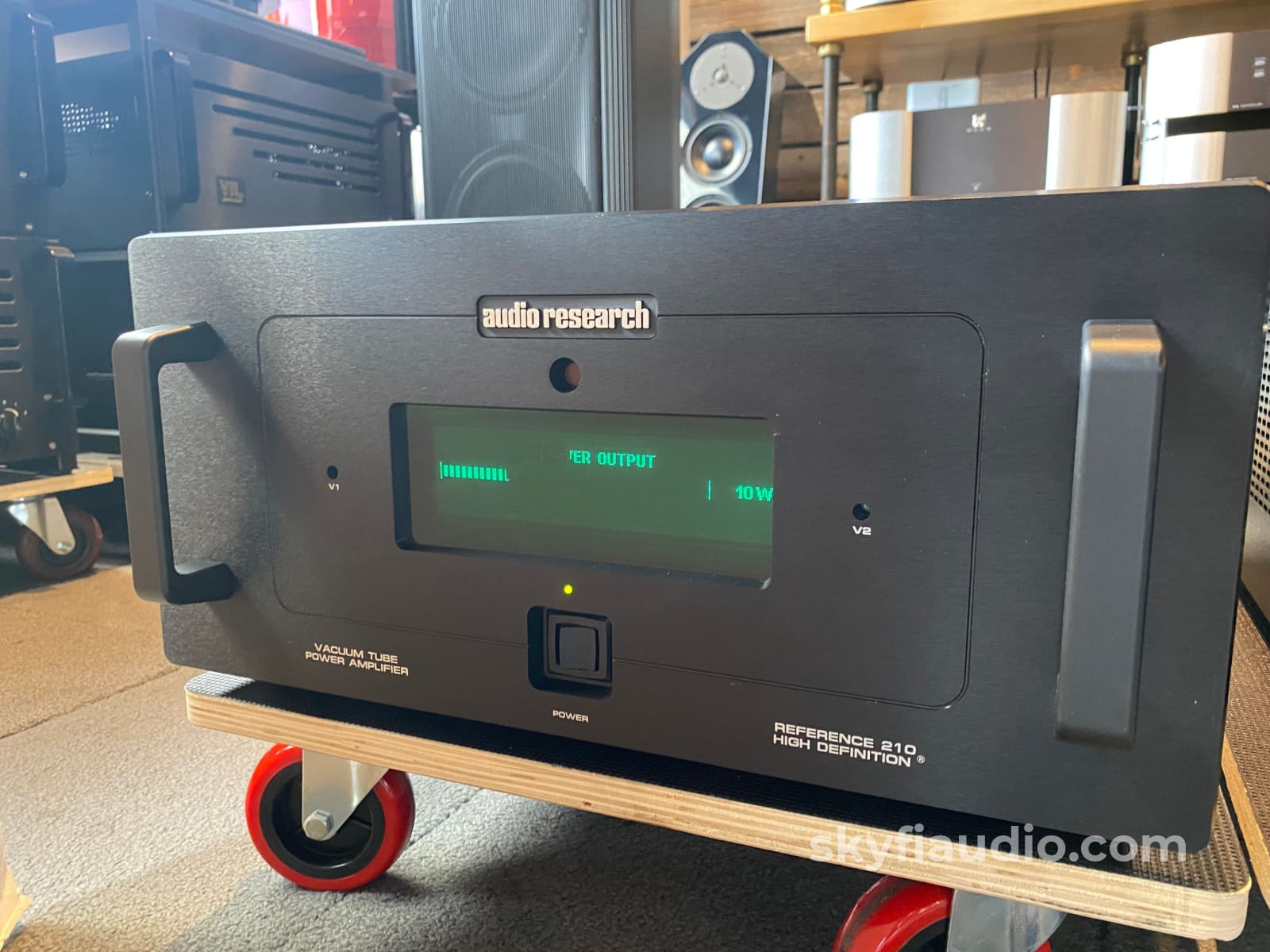
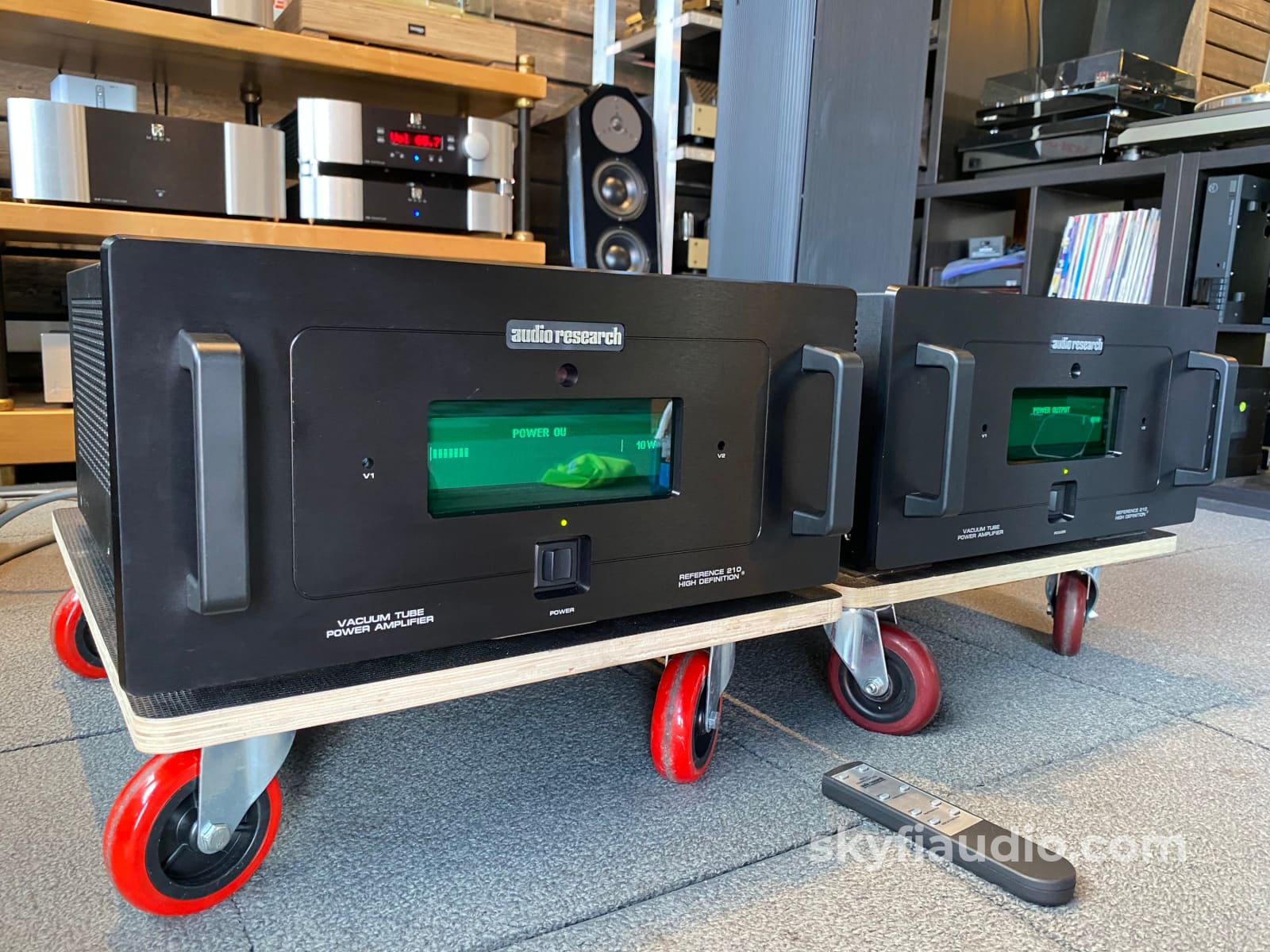
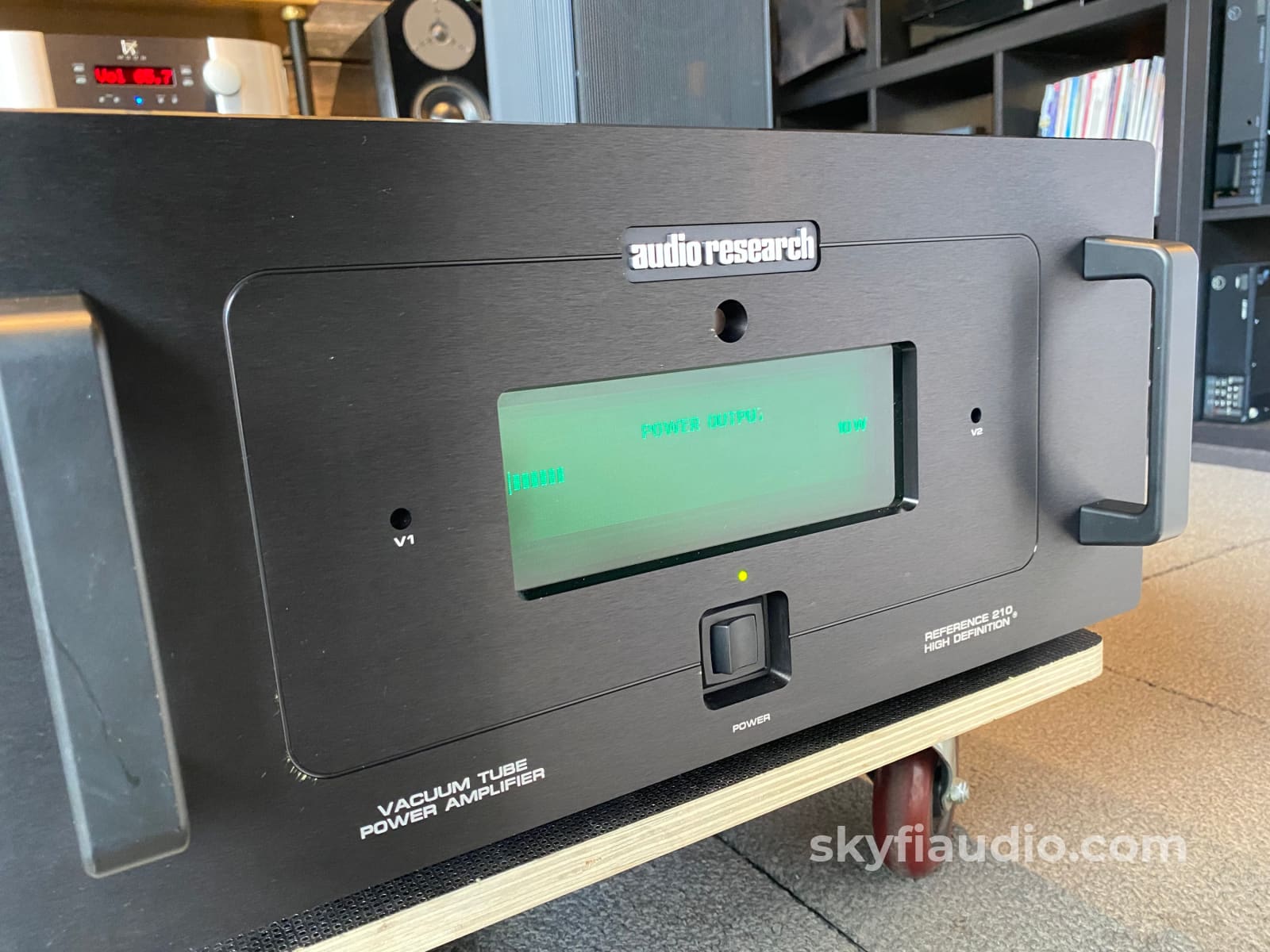
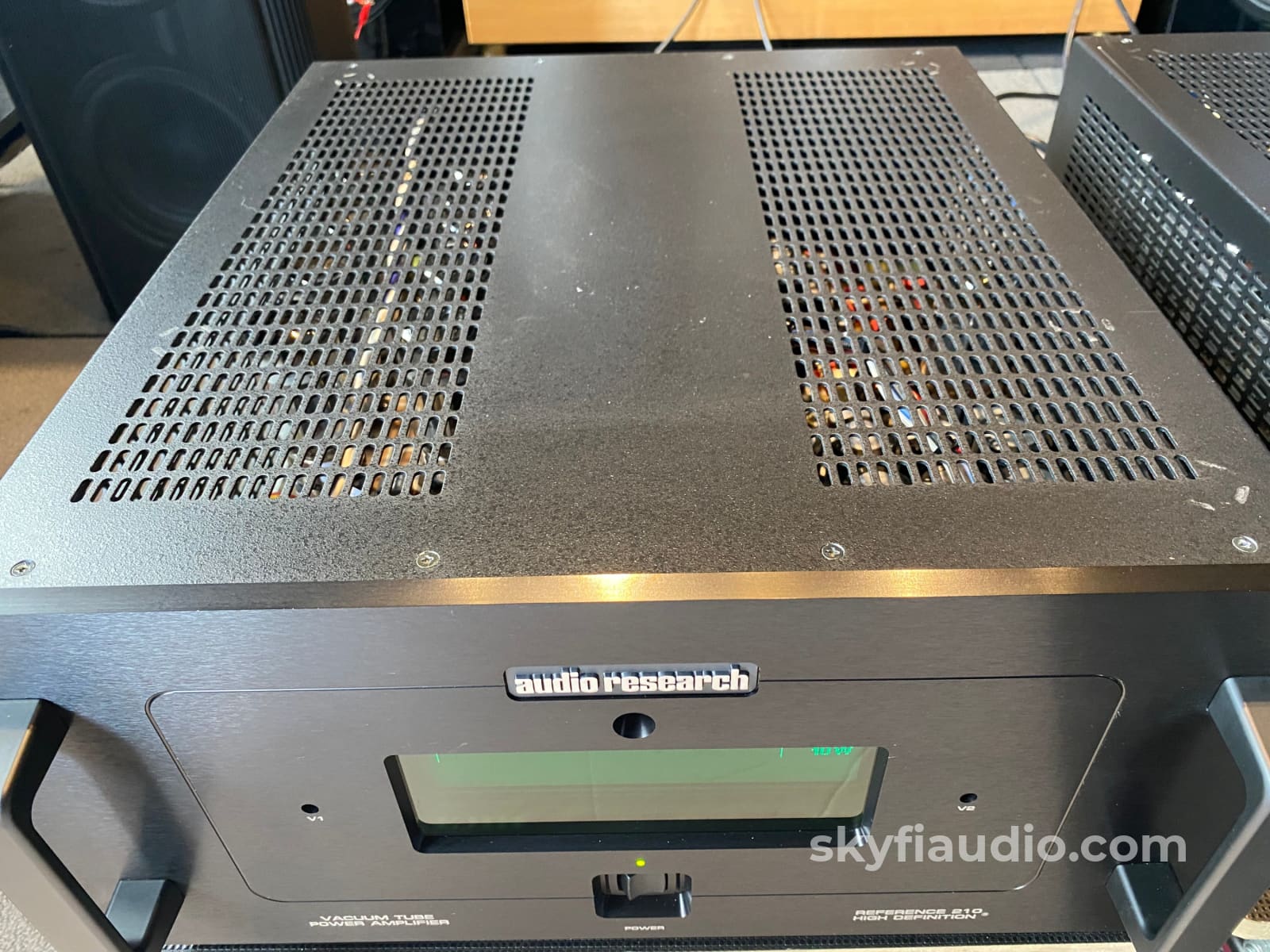
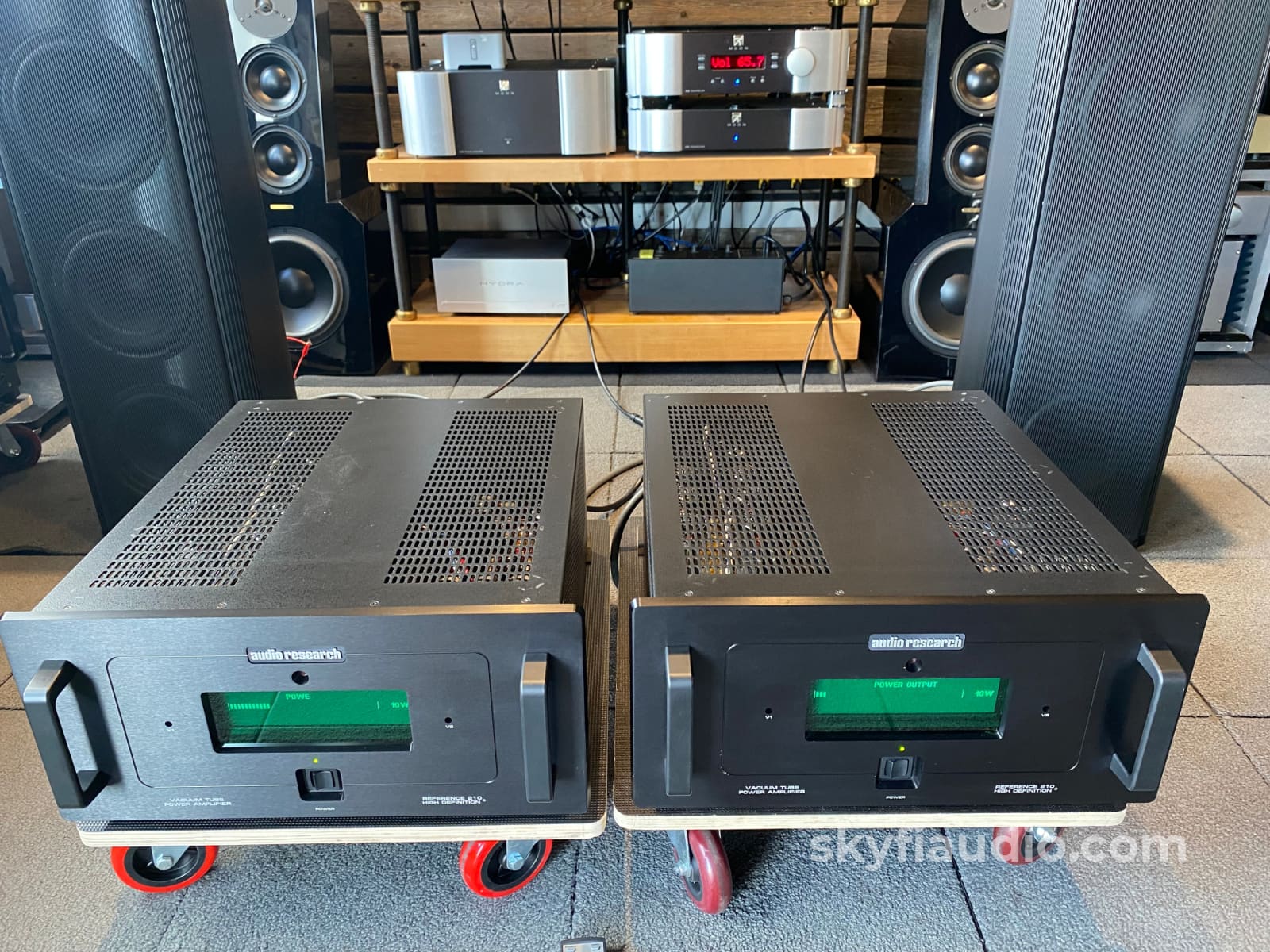
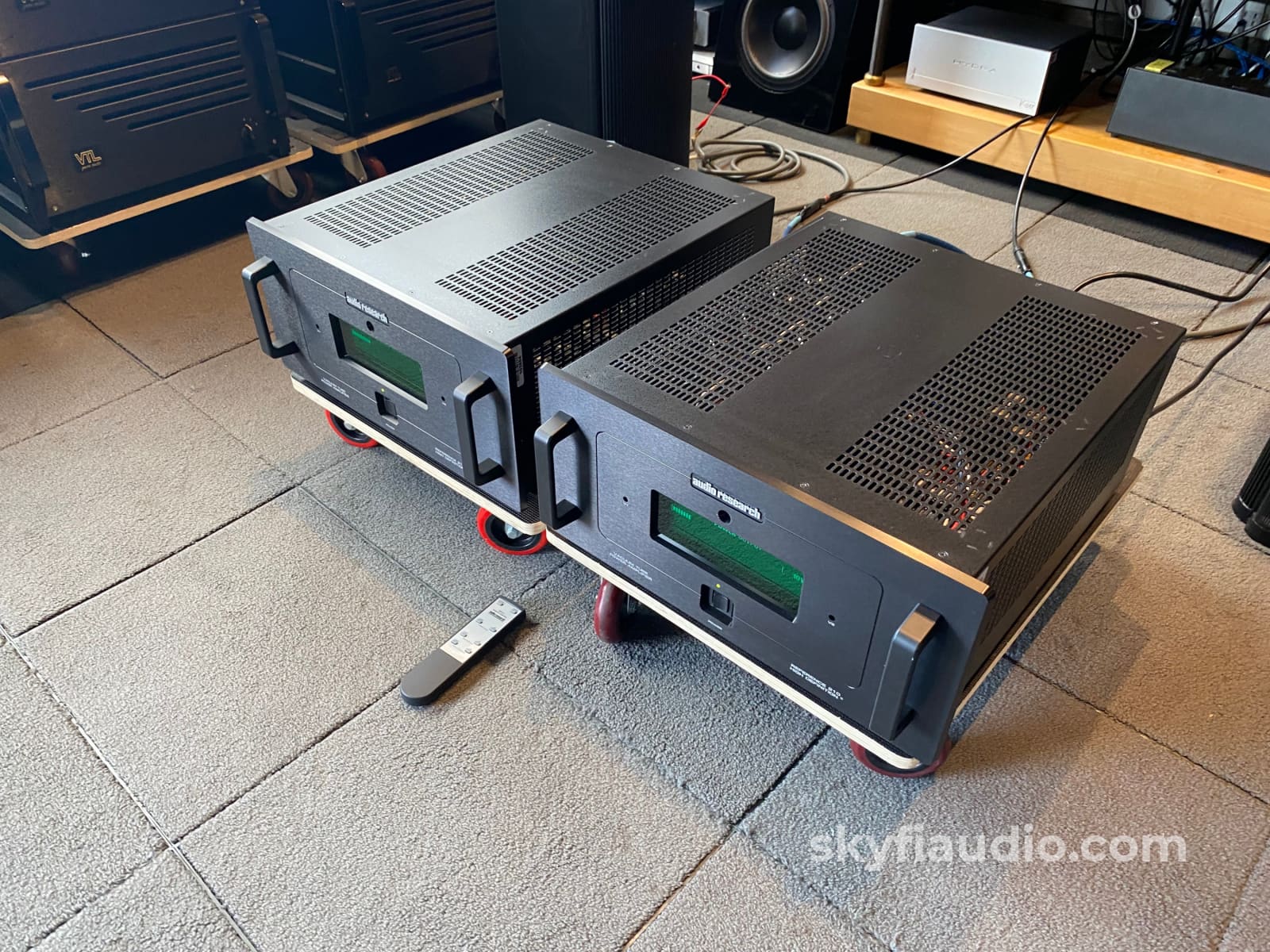
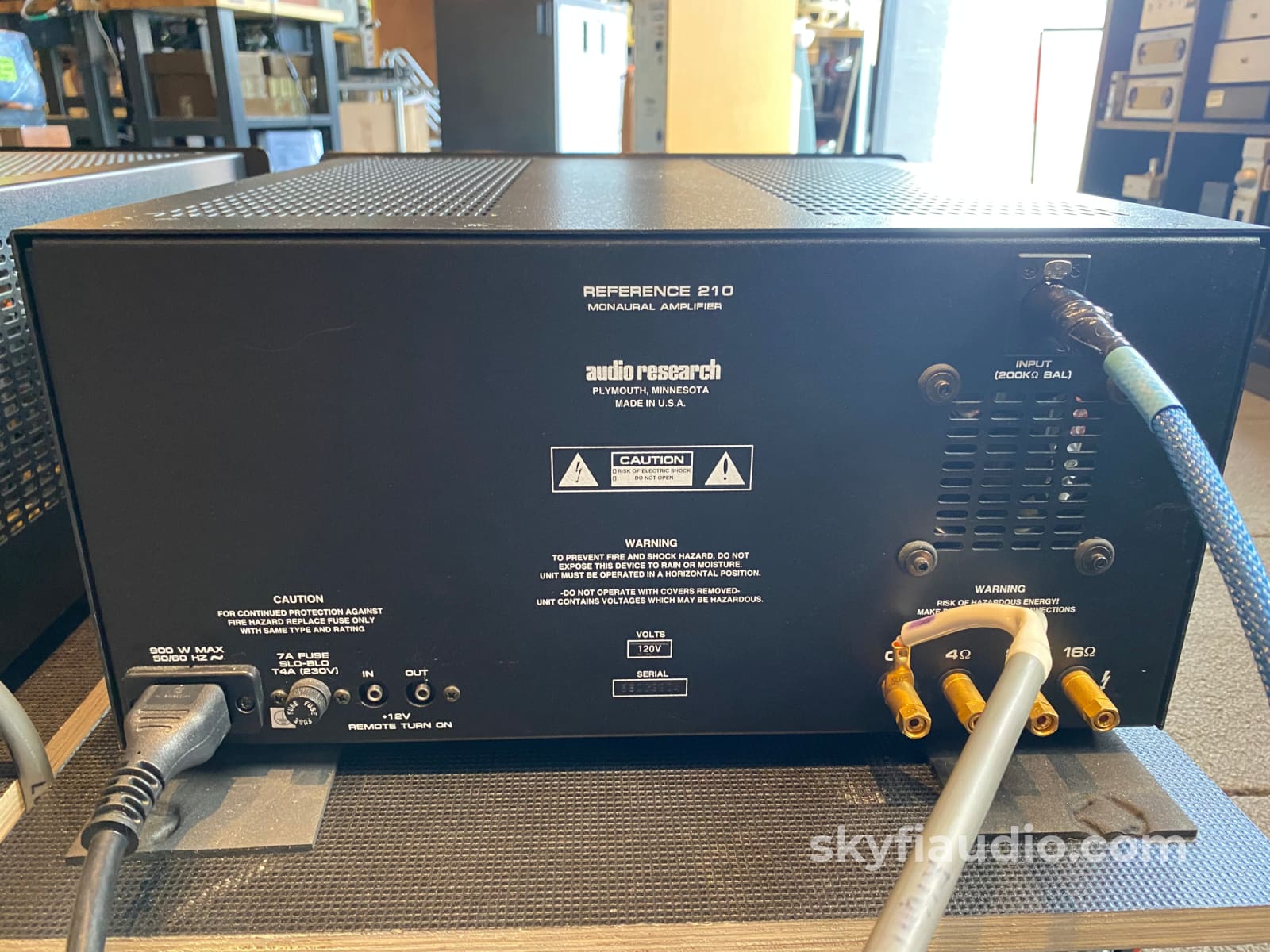
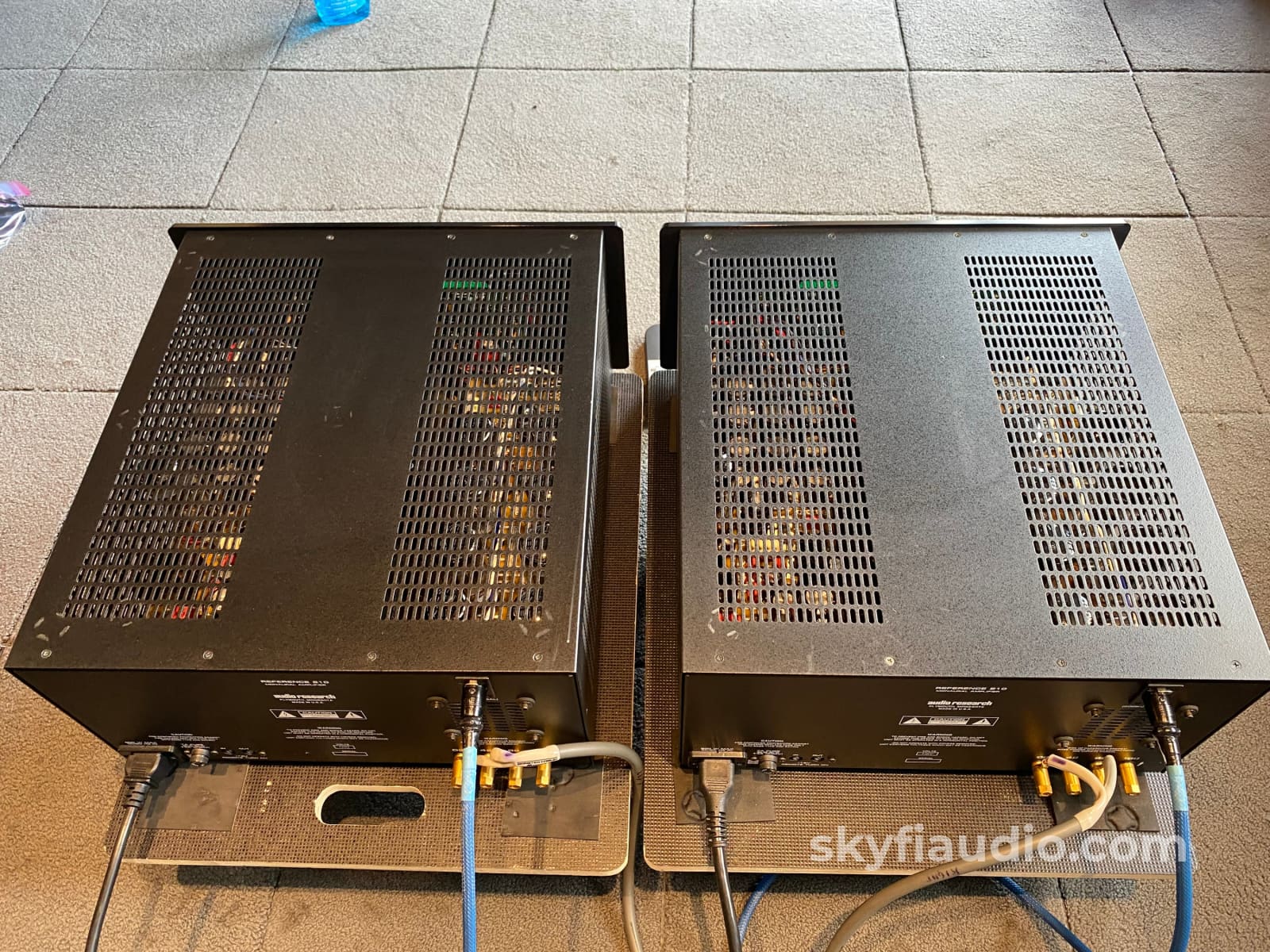
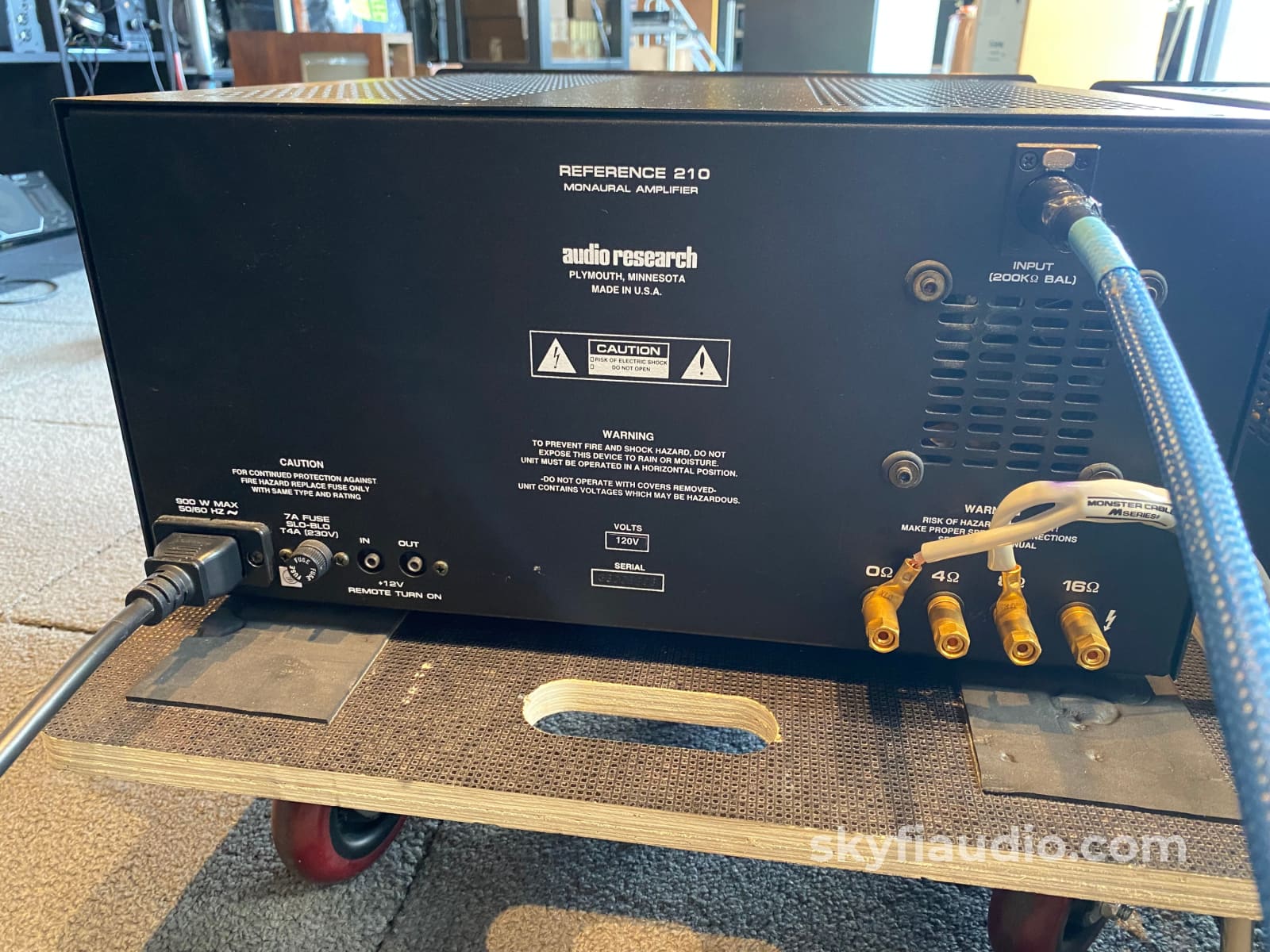
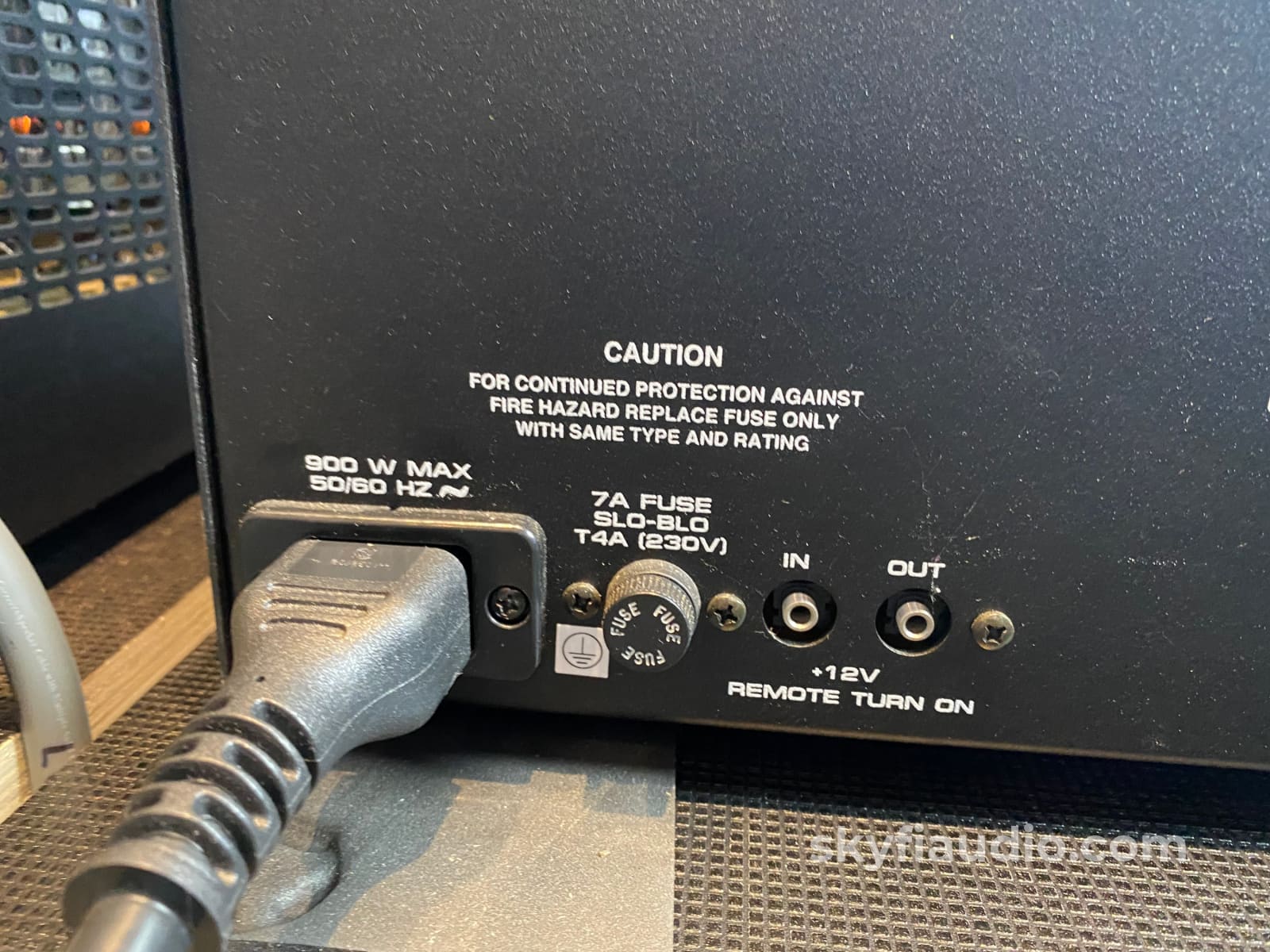
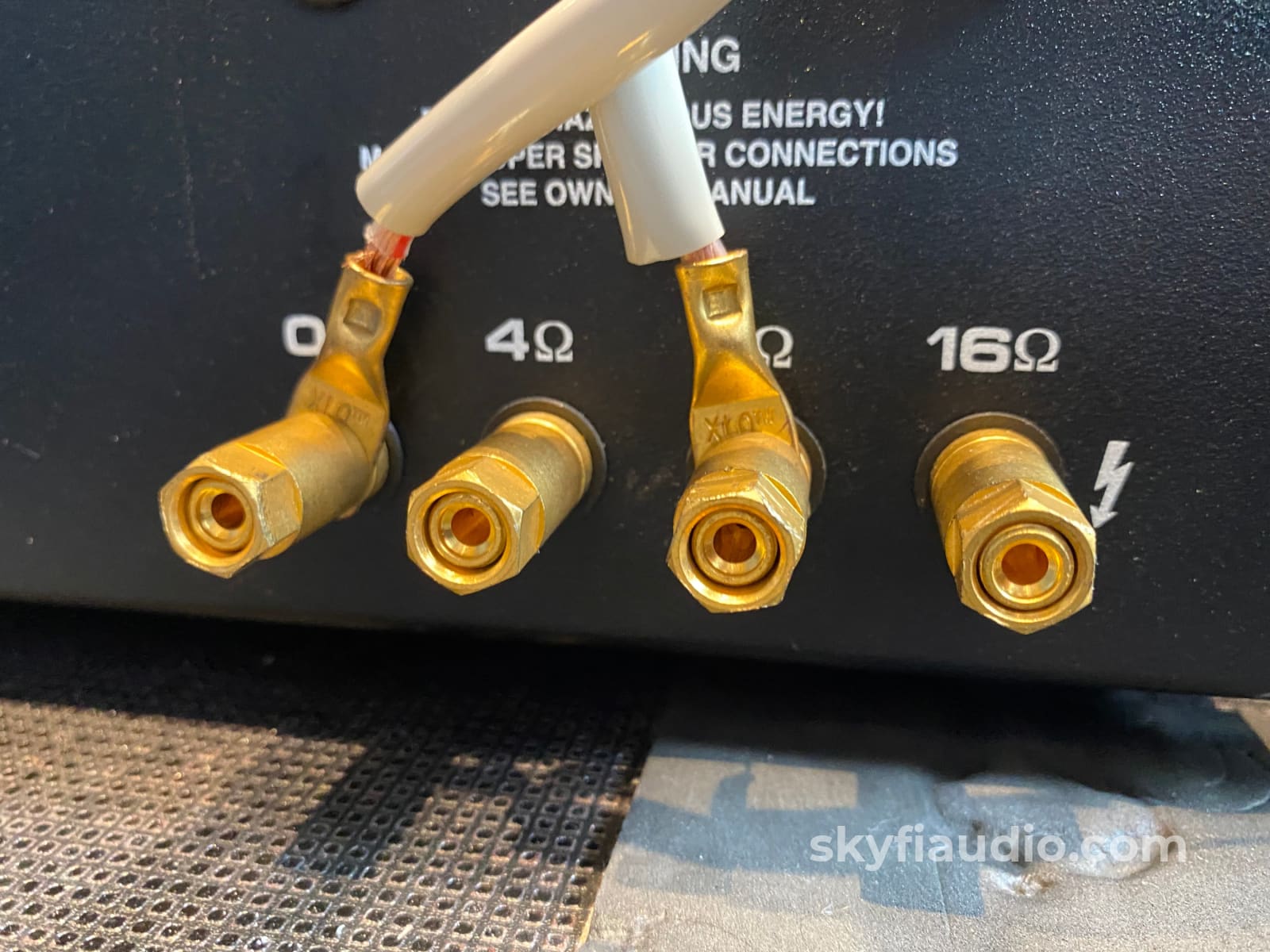
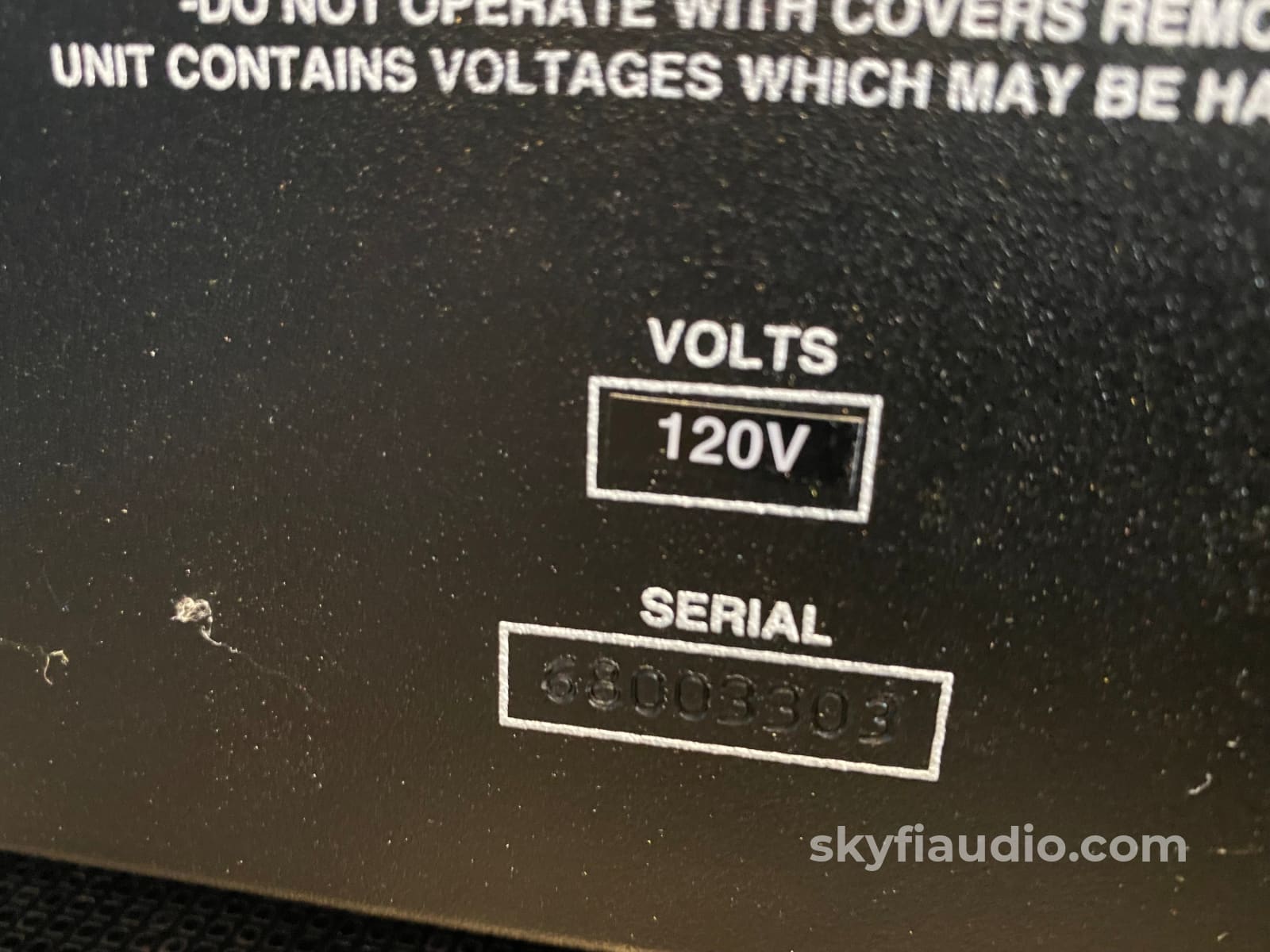
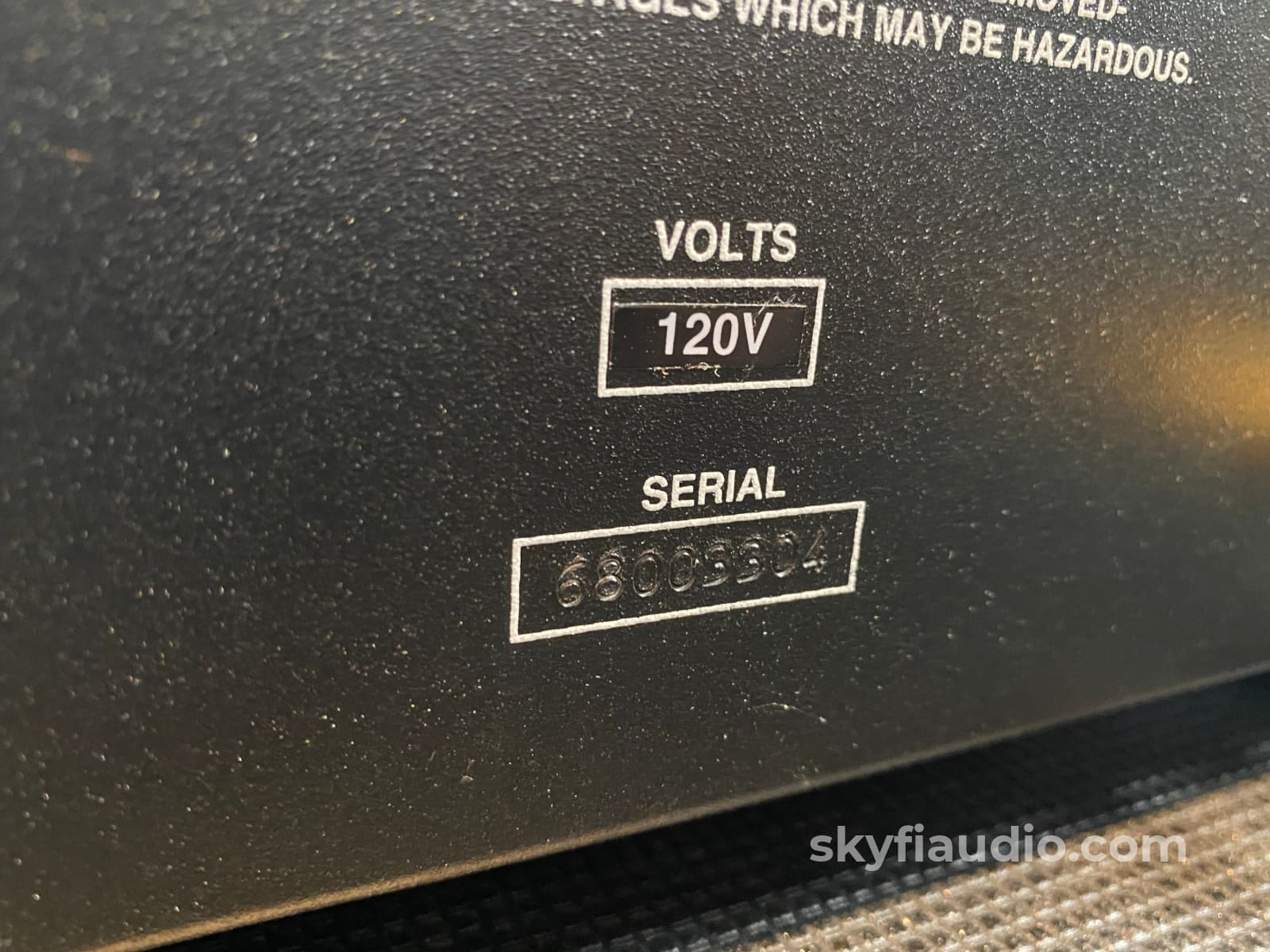
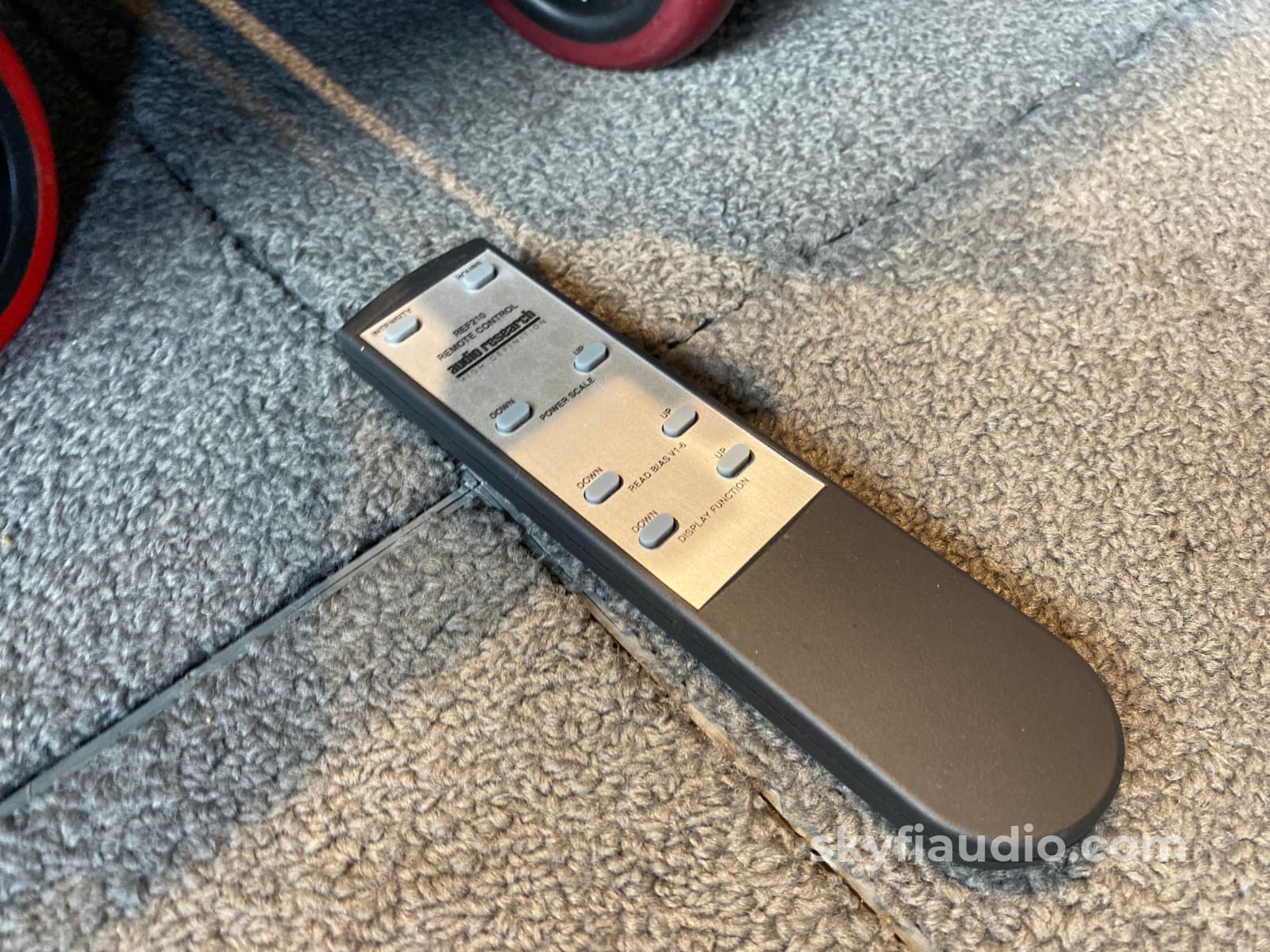
Audio Research Reference 210 Tube Monoblock Amplifiers
Free Shipping on *ALL* Electronics (Excluding Speakers, Contiguous 48 US States Only)
Pickup currently unavailable at SkyFi 479

Audio Research Reference 210 Tube Monoblock Amplifiers
SkyFi 479
479 South Broad Street
Glen Rock NJ 07452
United States
Reference REF210 tube monoblock amplifiers from Audio Research circa 2005-2010.
Finished in the rare black anodized aluminum option from the factory in MN.
$22,000 MSRP for the pair back in 2010.
"Sonically the Reference 210 is simply stunning in every respect. Resolution of detail is uncanny, with a vivid, transparent, you-are-there quality that is captivating. The performers are not mere images, but have real body, weight and presence. The soundstage is unbounded, with palpable space and air. Fine dynamic shadings and crescendos alike are unrestrained. And, bass impact, speed and articulation are a revelation. Once you have heard them, you will not soon forget the magic of these amplifiers." - ARC
Well cared for and working as they should throughout. Both amps went though our testing and intake process where we tested every tube and biased to ARC spec. They are now producing a clean 200W.
Your purchase also includes the pictured original ARC remote necessary for biasing.
*Please note these monoblocks require a balanced (XLR) preamp to work. And a single chassis screw is an aftermarket replacement.
Click below to add our recommended matching cables from Kimber Kable, all brand new as SkyFi is an official Kimber dealer.
Kimber Kable - BALANCED XLR Connectors - Better
Kimber Kable - BALANCED XLR Connectors - Best
Kimber Kable - Speaker Cables - Better
Kimber Summit Series Monocle XL Speaker Cables (PAIR) - Best
Kimber Summit Series BiFocal XL Bi-Wire Speaker Cables (PAIR) - Best If Applicable
Kimber Kable - Power Cords - Better
Kimber Kable - Power Cords - Best
More from Audio Research:
Following the successful introduction of the Reference 610T, it is time for a more affordable, compact amplifier to fill the void left by the discontinuation of the VTM200 and REF300MKII. We are pleased to announce the introduction of the new Reference 210 monoblock, a product which will allow a greater number of music lovers access to the Reference series of amplifiers.
The Reference 210 presents a familiar yet distinctive appearance. The chassis is enclosed, with a thick front panel the same height and width as the VT100/VTM200, but with a vacuum-flourescent display screen like the one featured on the REF3 and REF610T. The chassis is 19½" deep (plus handles) and has an internal frame like the 150M, with a one-piece ventilated cover that wraps around the top and sides. The front panel is available in Natural or Black finishes.
The vacuum-flourescent display has the same functions as the display on the REF610T, but they are addressable only through the handheld remote control. Functions include the choice of six levels of illumination, plus off; bias measurements for each output tube; A.C. line voltage; logarithmic, scalable power output (0-10, 0-50, 0-100, 0-200 watts); and total hours of tube use.
The internal layout is all new, with the main circuit boards mounted horizontally instead of vertically. The transformers are mounted on a raised central channel running front to back; on one side of the channel is a large circuit board containing all of the audio stages, and on the other side is a large circuit board with the power supply, contributing to a very clean and attractive appearance. There is a small Papst fan mounted on the rear panel to circulate air over the audio stages. The 12V D.C. fan runs continuously at a fixed low speed whenever the amplifier is powered-up.
Power output is 210 watts continuous. Like the REF610T, the REF210 is based upon a push-pull, fully balanced vacuum-tube circuit running in partial cathode coupling mode, utilizing three matched pairs of 6550C output tubes. The REF210 uses two 6550C driver tubes, each controlling three output tubes operating in unison. The input stage uses direct-coupled JFETs, followed by a 6N1P vacuum-tube amplifying stage. As with the REF610T, the biasing system is very simple, with only two bias adjustments.
Power supply energy storage is a monstrous 787 joules, three-quarters the size of the REF610T. (Compare that with the REF300MKII's 448 joules.) Shared with the REF610T are new proprietary coupling caps and extensive film-cap bypassing of all electrolytics in the power supply. There is tube regulation of the input stage, with six additional solid-state regulators. Power supply rectification is solid-state with a total of seven regulators. The massive, custom output transformer is an ultra-widebandwidth design: the frequency response of the REF210 is an incredible 0.5Hz to 240kHz (-3dB). Also, as in the REF610T, 50% coupling of the output stage cathodes to the transformer yields both higher efficiency and better sound than conventional pentode or triode operation.
Input is balanced only, while the output has separate taps for 4-8-16 ohm speaker loads. As expected, there is a 20A IEC connector for power, but unlike the REF610T, the REF210 has a 12V trigger to allow remote turn-on.
Sonically the Reference 210 is simply stunning in every respect. Resolution of detail is uncanny, with a vivid, transparent, you-are-there quality that is captivating. The performers are not mere images, but have real body, weight and presence. The soundstage is unbounded, with palpable space and air. Fine dynamic shadings and crescendos alike are unrestrained. And, bass impact, speed and articulation are a revelation. Once you have heard them, you will not soon forget the magic of these amplifiers.
SPECIFICATIONS
POWER OUTPUT
210 watts per channel continuous from 20Hz to 20kHz.
1kHz total harmonic distortion typically 0.5% at 210 watts, below .02% at 1 watt.
Approximate actual power available at “clipping” 240 watts (1kHz).
POWER BANDWIDTH
(-3dB points) 10Hz to 150kHz
FREQUENCY RESPONSE
(-3dB points at 1 watt) 0.5Hz to 240 kHz.
INPUT SENSITIVITY
1.7V RMS Balanced for rated output. (27 dB gain into 8 ohms.)
INPUT IMPEDANCE
200K ohms Balanced
OUTPUT TAPS
4, 8 and 16 ohms
OUTPUT REGULATION
Approximately 0.6dB ohm load to open circuit
OVERALL NEGATIVE FEEDBACK
12dB
DAMPING FACTOR
Approximately 14
SLEW RATE
40V/µs
RISE TIME
1.2 µs
HUM & NOISE
Less than 0.3mV RMS - 106dB below rated output (IHF-A weighted, input shorted, 16 ohm output)
POWER SUPPLY ENERGY STORAGE
Approximately 787 joules
POWER REQUIREMENTS
105-130VAC 60Hz (260-250VAC 50Hz) 680 watts at rated output, 950 watts maximum, 380 watts at "idle", .15 watts off.
TUBE COMPLEMENT
• 3 x matched pairs 6550C power output
• 1 x matched pair 6550C driver
• 2 x 6N1P gain stage and regulator driver
• 1 x 6550C regulator
DIMENSIONS
19" (48.3 cm) W
8-3/4" (22.2 cm) H
19-1/2" (49.5 cm) D
Handles extend 1-1/2" (3.8 cm) forward
WEIGHT
74 lbs. (33.6 kg) Net
89 lbs. (40.4 kg) Shipping
Audio Research Reference 210 (REF210) Owner's Manual
The SkyFi Testing Process for Tube Amplifiers:
We start with a visual inspection of all internal components to make sure that there are no signs of heat stress or damage. Capacitors are checked for telltale signs of predictive failure including bulging, shrunken wrappers, or physical leakage. We also inspect resistors and other passive components for signs of overheating. If tube arcing has occurred in the past we can usually spot discoloration on the output tube sockets. On vintage units we often spot check select capacitors for value and ESR.
If the amplifier passes visual inspection, we move on to a full test of all of the tubes. We use an Amplitrex AT-1000 Tube Tester which is capable of testing both emission and Gm with a high degree of accuracy. We document the results of each tube and replace any weak or suspect tubes before proceeding. When we power on tube amplifiers for the first time we usually use a variac and current limited AC supply and slowly raise the voltage up to nominal mains level while monitoring plate, screen, filament, and negative bias supply voltages where applicable. If everything is in order we feed a low level test signal into the amplifier’s input and monitor its output on an oscilloscope across an 8 ohm dummy load. At this point we are just looking to verify basic function and confirm that the output transformers are not damaged. Once we have verified that the amplifier is safe to operate, we connected it to full mains power. For fixed bias amps we set the bias to manufacturer spec. For cathode biased amps we monitor the plate to cathode voltage to determine if the output tubes are operating in a safe range. Once the output section is verified we move onto bench evaluation.
We start by feeding the input of the amplifier with a low level 1KHz test signal, slowly increase its amplitude while monitoring the amplifier’s output on an oscilloscope for signs of noise, clipping, distortion, or improper channel balance. We continue increasing the signal level until the amplifier reaches clipping. At this point we take an output power measurement and compare it to the spec sheet of the amplifier to verify proper performance. We finish off the bench evaluation with a 1KHz square wave check and a 20Hz to 20KHz sine sweep to assess the amplifier’s frequency response characteristics. This battery of tests will usually reveal if the amplifier has any issues that need further attention.
Before the device leaves the bench, we perform a listening test with actual music using a variety of preferred test tracks. Our benches are outfitted with familiar monitor speakers which help us identify inconsistencies that will not always show up on our test gear. The main things that we are listening for are hum or noise with no signal present, proper center image, clicks, pops, or any other obvious undesirable audio characteristics.
If the unit passes all of these tests it is moved to our long term testing rig where we simulate real word operating conditions for 6-8 hours. For tube amps we like to run this test at least twice. This allows us to monitor the unit for signs of thermal runaway or intermittent issues that only crop up when it has fully come up to temperature. We find this step to be essential, especially for vintage units.
|
Item |
Included |
|
Original Boxes |
Not Included |
|
Manual |
Not Included |
|
Remote |
Yes Included |
|
Cables |
Yes - Power Only |
|
Physical Condition (Info Here) |
7 / 10 |
|
Working Condition |
10 / 10 |
Choose options


















